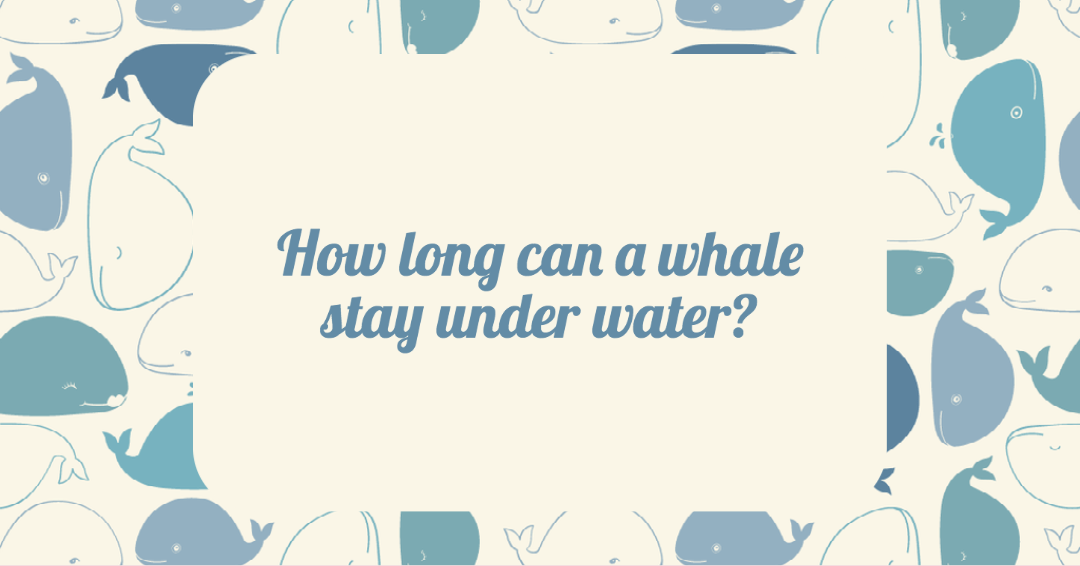Whales are among the most interesting marine animals that exist. Blue whales are the largest animals that ever existed. They even out size the dinosaurs. They have so many specialized features that they seem a work of fiction. Besides the fact that they live their entire lives under water, same as dolphins, whales are in fact mammals. Dolphins are technically whales. They belong to a class of whales called toothed whales.
They give birth to young adults, nurse with milk and are warm blooded. Most young and some adults even have hair. Whales are believed to have evolved from a four legged amphibian which is called Pakicetus. As they evolved from a four legged animal, their back bones do not bend side to side, like fishes, rather up and down. That is why their tails are horizontal instead of vertical like other marine animals. Toothed whales use echolocation to hunt and navigate.
Whales are technically carnivores and they eat about everything in the sea. Their method of hunting is both interesting and menacing. They open their mouths widely at a 90 degree angle, taking everything in from small fishes to squids and even water. Then they filter the water out. Blue Whales can eat 4 tons of food every day, and they defecate in the same magnitude. Their feces act as fertilizers for the plants growing on surface of water. Whales are also excellent divers and life span is approximated at two hundred years.
Besides the above stated facts, how whales are able to stay under water without breathing is perhaps the most fascinating one. Most whales can hold their breath for about 60-90 minutes. Cuvier’s Beaked Whale holds the record of holding its breath for as long as 137 minutes. But how exactly can they hold their breath and dive for so long. We need oxygen to provide our cells with energy. In this process carbon di oxide is made. Carbon dioxide is acidic and when mixed with blood proves to be fatal for living beings. In fact if we hold our breath, we do not die from shortage of oxygen, we die due to carbon dioxide poisoning.
The reason that whales are able to hold their breaths for too long is the high amount of hemoglobin and myoglobin present in their bodies. Another reason is the high tolerance they have to carbon dioxide in their blood. A whale’s brain does not trigger something called a breathing response until the levels of carbon dioxide are too high.
These mechanisms which are a part of the response that we observe in marine mammals, are adaptations that they were able to achieve in their evolutionary history. They are able to live in an aquatic environment and not drown while in middle of sleep. Cetacean Whale that hold the record of longest dive, reduce the number of breaths they take during rest periods. A dolphin, which is technically a whale, can average 8 to 12 breaths in a minute when they are fairly active only to have their breathing rate drop to about 3 to 7 per minute while resting.
Where humans’ breathing is involuntary while we sleep, whales’ breathing is voluntary. This is why, in order to sleep, whales and dolphins undergo a process that is referred to as hemispheric sleep. In hemispheric sleep they shut down only half of the brain. An interesting thing about this is that since each side of a mammalian brain operate half of the body. They are able to keep their one eye open. The other half of the brain that stays awake remains at a low level of alertness.
This not only helps them in order to watch for predators and to protect their young ones. Also to simply avoid any obstacles in the ocean. The alert half of the brain also helps the whale to breath while they sleep under water. They remain conscious of the position of their blowhole to surface of the ocean in order to easily take a breath when it’s time. After usually two hours, since the other half of the brain also needs to sleep what do is that they will reverse the alert half of the brain so the other hemisphere can rest.
You might also like:
